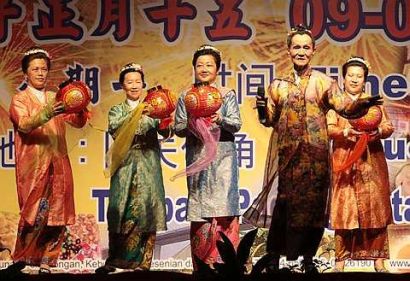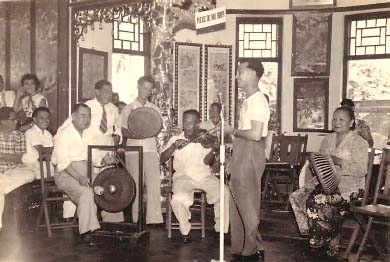Pantuns
0Pantuns
by Norman Cho
The pantun is sometimes described as Malay poetry. It consists of stanzas made up of rhyming quatrains (4-liners). Its history was thought to have originated from golden period of the Malays during the 15th century. When a pantun is sung, it becomes the dondang sayang (melody of love). Normally, the last word of the first line would rhyme with that of the third line, and, the second line would rhyme with the fourth line. If this is not achievable, then the rhyme would just be at the first and third line, or, the second and fourth line.
Composing a pantun is no mean feat. One must first have an excellent grasp of the Malay vocabulary in order to select meaningful words to rhyme while remaining contextually precise, which is equally challenging. The first two lines of the stanza will describe a situation/scene while the next two lines will either provide a follow-up on the situation/scene or the meaning behind the situation/scene. Very often, the pantun would carry hidden meanings and one would need to read between the lines. In the old days, nyonyas could pass sarcasm through the subtlety of a pantun to unsuspecting peers! It takes wit to compose a pantun and intelligence to decipher its intended meaning.
Here is an example:
Chek Syed turun ka paya
Bua kana tiga persegi
Jangan di rompak ruma saya
Tiang nya batu dinding nya besi
Mr Syed went to the marsh
Triangular are the olives
Do not rob my house
Its pillars are stone and its roof metallic
(Intended meaning: I am but a poor person)
– Source: malaycivilization.ukm.my
Dondang Sayang is pantun in its sung form. This art-form was believed to have been originated from Malacca during the 16th century from the music that was brought in by the Portuguese when they colonised the settlement. Western musical instruments like the violin and the accordion would accompany the Malay drums and the gong. A topic would first be selected and an impromptu quatrain would be composed and sung using this quatrain as a challenge to another singer who must sing a reply in the context of the topic. It is indeed a challenge of wits and words!
The Babas and the Nyonyas are adept in the art of pantun which they had adopted from the Malays. One of the exponent of this art-form is Baba Koh Hoon Teck. Not only did he actively participated in the Dondang Sayang but even composed and published books on Pantuns which were published by his company, Koh and Company.

Koh HoonTeck (photo: Cheah, J. S. (2006). Singapore: 500 early postcards (p.11). Singapore: Editions Didier Millet.)
Koh Hoon Teck was laid to rest at Bukit Brown Cemetery and sent off with pantuns which was his dying wish. He died on Valentine’s Day 14th February 1956 according to an article.
Here’s a tribute to Koh at his tomb during the Peranakan Trail at Bukit Brown Cemetery in 2011
Mr. G.T Lye gives a spontaneous rendition of a pantun and shares some anecdotes at the tour, captured on video by Victor Yue
You can listen to a performance of dondong sayang by the late Baba William Tan



Comments